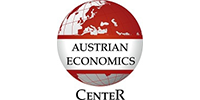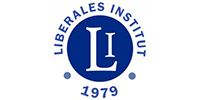Caputo’s dollarization miscalculation
“Tell me you don’t know how to dollarize without telling me you don’t know how to dollarize” should be the tagline for Argentine Economic Minister Luis Caputo’s recent statement confirming that dollarization has been discarded (if it was ever seriously on the table).
In a recent interview with Luis Major at LN+, Caputo was asked directly about dollarization prospects. He answers that dollarization has been discarded due to a lack of US dollars.
I’ll skip some details and focus on two major problems with Caputo’s reasoning.
An irony
Since then, the government claims to be nothing short of the best government in Argentine history, with Caputo as the best Minister of Economics as well. Between the IMF and the US Treasury, Argentina has been pledged a total of $40 billion in the last couple of months, an amount that now seems insufficient to dollarize, according to Caputo.
Let that sink in: Milei claimed $10 billion was sufficient. Now, with $40-60 billion pledged (four to six times that amount), Caputo says it’s not enough. Either Milei was wrong then, or Caputo is wrong now.
Wrong calculation
Caputo only refers to a conversion ratio of reserves (R) over some money aggregate (R/BM; R/BM+; R/M3).1
This is the wrong approach. The dollarization rate is the “exchange rate” consistent with a dollarized economy; it’s not a simple conversion ratio. Like any exchange rate, its equilibrium value depends on demand and supply in the foreign exchange market, not on the amount of reserves in the central bank.
This accounting calculation overestimates the amount of dollars needed to dollarize. This approach is so flawed that it would suggest Ecuador’s dollarization was impossible, yet Ecuador has been dollarized for more than 25 years now. You’d think the Argentine government would learn from this experience rather than declaring such an outcome impossible. Interestingly, as Ecuador removed sucres from circulation, the amount of US dollars in its central bank actually increased. It appears that dollarization can be a means to accumulate more reserves, rather than lose them.
Dollarization is not a liquidation scenario
An implicit assumption in Caputo’s calculation is that dollarization resembles a liquidation scenario where the central bank must be liquidated and pesos exchanged immediately (or in a very short period of time).
This is not the case. Why? Because pesos in circulation are dollarized gradually, not suddenly, and making bank deposits (besides the central bank) is another way to dollarize those pesos without the need for US dollar cash. The central bank doesn’t need to have all the dollars upfront. We know this from experience, not armchair speculation.
In El Salvador (2001) and Ecuador (2000), it took 9 months to 2 years to exchange their domestic currency in circulation for US dollar bills. Plenty of time to secure more US dollars if needed.
The government doesn’t lack the dollars to dollarize. It lacks the will.
This material was originally published here: https://economicorder.substack.com/p/caputos-dollarization-miscalculation
































